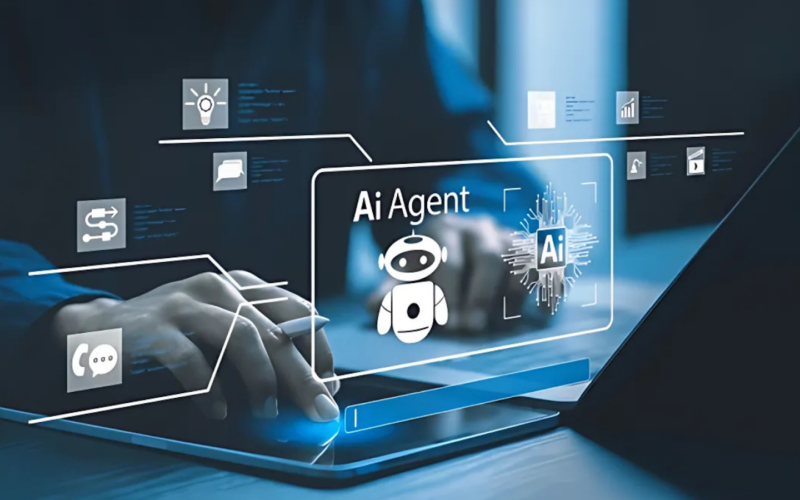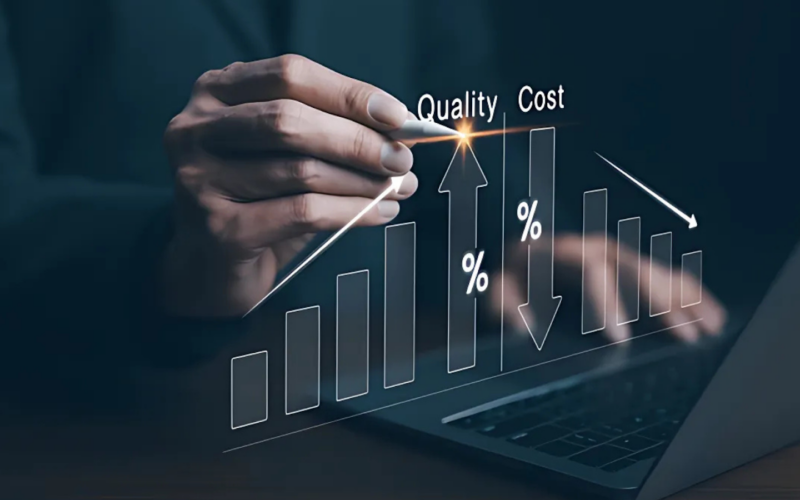Do you struggle to figure out which of your business processes are truly worth automating? As an enterprise leader, you likely recognize the promise of robotic process automation (RPA), but choosing where to apply it often feels like weighing the costs, complexity, and tangible business outcomes.
Furthermore, this isn’t just a passing buzzword; it’s a global shift in how organizations scale. The robotic process automation (RPA) market is projected to reach over $13 billion by 2030, indicating that enterprises worldwide are increasingly turning to automation to drive efficiency and growth. Still, many organizations face the same critical question: which processes deliver the greatest value when automated?
In this article, we’ll go beyond surface-level advice and give you a clear look at enterprise robotic process automation. You’ll learn which processes benefit most, why they matter for long-term success, and how to implement RPA in a way that produces measurable results.
Key Takeaways
- RPA thrives on structure: The best candidates are high-volume, rule-based, and error-prone processes, such as invoice handling, claims management, and order processing.
- Industry impact is broad: Enterprise robotic process automation delivers measurable ROI in finance, retail, healthcare, logistics, manufacturing, and utilities by cutting costs and improving speed, compliance, and accuracy.
- AI + RPA = intelligent automation: RPA handles execution, while AI adds cognitive power (e.g., process mining, NLP, predictive insights) to expand automation beyond repetitive tasks.
- Implementation requires strategy: Successful RPA rollouts follow five steps: identify automation opportunities, build a business case, define an Automation Operating Model (AOM), partner with experts, and create a roadmap.
- The enterprise edge: With the RPA market projected to surpass $13 billion by 2030, enterprises that adopt structured, scalable automation today will gain resilience, efficiency, and competitive advantage tomorrow.
Understanding Enterprise Robotic Process Automation
Robotic Process Automation (RPA) is a software technology that enables the design, deployment, and management of “bots” that mimic human actions within digital systems. These bots can read screens, type, move data between applications, and complete rule-based tasks at scale.
Unlike people, RPA bots work nonstop with consistent accuracy, helping you cut backlogs, reduce errors, and free employees to focus on higher-value work.
RPA initially focused on simple, repetitive back-office activities, but its scope has since expanded. With advances in artificial intelligence (AI), machine learning (ML), natural language processing (NLP), and computer vision, modern RPA can now handle:
- Intelligent document processing (IDP)
- Mining and analyzing communications
- Assisting with decision-making in semi-structured tasks
- Enterprise-grade orchestration, governance, and security (AI-driven agents)
At its core, enterprise robotic process automation enables you to scale efficiency, reduce costs, and build resilience in processes that were once heavily manual. The question is no longer whether RPA can create value, but which of your processes are best suited for it.
Also Read: A Comprehensive Guide to Business Process Automation
Where Does Enterprise Robotic Process Automation Make the Most Impact?
Not every task in your enterprise is suited for automation, but specific processes consistently stand out as ideal candidates.
From finance to HR, healthcare to logistics, and retail to insurance, RPA is already at work simplifying repetitive, time-consuming tasks. Within large enterprises, RPA use cases span finance, procurement, legal, customer support, QA, operations, and IT.
Fundamentally, enterprise robotic process automation thrives on processes that are:
- High volume and repetitive
- Rule-based with minimal exceptions
- Dependent on structured data inputs and outputs
- Focused on accuracy, compliance, and speed
Characteristics of Processes Ideal for RPA
| Ideal Characteristic | What It Looks Like in Practice | Example for Enterprises |
| High volume, rule-based | Repeated daily tasks that follow fixed rules | Processing thousands of invoices in finance |
| Structured inputs and outputs | Data flows with slight variation | Updating HR onboarding records |
| Data-heavy, error-prone | Manual data entry, validation, or transfers | Migrating claims data in insurance |
| Standardized, predictable steps | Tasks with clear workflows and approvals | Purchase order approvals in procurement |
Pro Tip: Start small. Automate one high-volume, low-risk process (like invoice processing) to showcase results, then expand to more complex workflows.
Also Read: Introduction to Bot as a Service (BaaS)
Once you know which processes are the best fit for RPA, the next question is where it’s making the most significant impact across industries. Let’s look at real-world enterprise use cases.
Key Industry Use Cases of Enterprise Robotic Process Automation
Enterprise robotic process automation goes far beyond routine back-office tasks. In healthcare, it accelerates claims processing and updates to electronic health records (EHRs). In finance, it supports real-time fraud detection and compliance reporting. Retailers use it for demand forecasting and automated order management, while logistics providers rely on it for shipment tracking and customs documentation. Even in insurance, RPA bots streamline underwriting and policy servicing.
Across these industries, automation enhances efficiency, ensures compliance, and delivers faster, more reliable customer experiences. Below are some of the most significant applications across the top sectors:
1. Banking and Finance
Finance functions rely on data-driven, rule-based processes that require both speed and accuracy. This makes them prime candidates for robotic process automation in enterprises. From accounts payable to fraud detection, RPA helps financial institutions reduce risks, enhance compliance, and enable teams to focus on strategy.
Key Use Cases
- Accounts Payable
- Automates invoice data capture, vendor matching, and approval workflows.
- Reduces errors and accelerates payment cycles.
- Example: An enterprise-level investment firm processing 50,000 invoices per month can reduce manual cycle times by utilizing bots for validation and approvals.
- Financial Planning & Analysis
- Processes large volumes of structured and unstructured data across multiple ERP and BI systems.
- Generates forecasts, budgets, and variance reports faster.
- Example: A leading commercial bank can use RPA to gather daily transaction data from its core banking system, integrate it with market feeds, and update financial models for liquidity and capital adequacy planning. This automation will streamline the monthly close process, enabling executives to gain faster insights into profitability, risk exposure, and regulatory capital requirements.
- Fraud Detection & Compliance
- Bots scan transactions for anomalies and instantly flag suspicious activity.
- Ensures compliance with regulations like SOX or Basel III.
- Example: A retail bank can integrate RPA with ML models to review a vast number of credit card transactions daily, identifying potential fraud in a few minutes.
- Customer Operations
- Handles document verification for KYC/AML.
- Automates customer asset portfolio updates.
- Improves turnaround times for account openings and loan approvals.
- Example: In wealth management, bots automatically check KYC compliance, validate digital signatures, and update CRM records, reducing onboarding time for new clients.
2. Retail
For retail enterprises, customer experience is everything. Yet behind every smooth transaction is a complex network of supply chains, pricing systems, and service operations. Enterprise robotic process automation (RPA) helps retailers simplify these processes, reduce operational costs, and deliver consistent customer satisfaction.
Key Use Cases
- Inventory Management
- Bots track stock levels in real time, trigger reorders when thresholds are reached, and prevent overstocking.
- Example: A global supermarket chain can use RPA to sync point-of-sale (POS) data with its warehouse system, which significantly reduces stockouts.
- Personalized Customer Experience
- RPA analyzes purchase histories and browsing behavior to tailor offers and promotions to individual users.
- Example: An online fashion retailer can utilize RPA-driven insights to send personalized discount codes, thereby boosting campaign conversions.
- Price & Promotion Management
- Bots automate dynamic pricing by scanning competitor sites, market trends, and sales data.
- Example: A consumer electronics retailer can utilize bots to regularly update online prices, ensuring competitiveness without requiring manual oversight.
- Order & Returns Processing
- RPA handles online orders, updates inventory in real time, and manages returns automatically.
- Example: A US-based e-commerce player can adopt RPA bots to expedite order reconciliation and achieve a faster turnaround for customers.
All of the above help you build a competitive advantage in markets where margins are slim and loyalty is fragile.
Also Read: How RPA eliminates long wait times & services customers in 30 seconds
3. Healthcare
Healthcare organizations face rising patient expectations, stringent regulations, and vast amounts of data. Enterprise robotic process automation helps providers address these challenges by automating repetitive administrative tasks, reducing manual errors, and enabling professionals to spend more time on patient care.
Key Use Cases
- Appointment Scheduling
- Automates booking, reminders, and follow-ups to reduce missed visits.
- Example: An extensive hospital network can utilize RPA bots to assign appointment slots based on doctor availability and automatically notify both patients and healthcare providers.
- Patient Registration
- Automates account creation, history verification, billing, and claims initiation.
- Example: Clinics deploy RPA bots to handle patient intake forms and insurance checks, cutting registration time at the front desk.
- Claims Management
- Automates insurance claims processing, from submission to reconciliation.
- Example: Hospitals utilize RPA to extract claim data from electronic health records (EHRs) and submit it directly to insurers, thereby reducing delays and denials.
- Post-Discharge Supervision
- Sends reminders for prescriptions, follow-up visits, and care instructions.
- Example: RPA bots remind post-surgery patients about upcoming check-ups and medication pick-ups, improving adherence and recovery.
- Billing & Payments
- Generates invoices automatically, updates patient records, and processes payments.
- Example: Providers can utilize bots to generate invoices instantly after discharge, resulting in transparent billing for patients.
- Data Management
- Updates medical records across systems, reducing errors and data silos.
- Example: Laboratories can rely on bots to automatically transfer test results into hospital databases, ensuring clinicians see updated records in real-time.
- Staffing & Workforce Management
- Automates shift planning, attendance tracking, and payroll updates.
- Example: Hospital administrators can adopt bots to balance staff rosters and prevent burnout.
4. Transportation and Logistics
Transport and logistics enterprises rely on precise coordination across fleets, warehouses, customs, and delivery networks. Manual execution in these areas often slows operations and introduces costly errors. Enterprise robotic process automation (RPA) streamlines repetitive workflows, frees up human teams for higher-value planning, and improves end-to-end supply chain visibility.
Key Use Cases
- Cargo & Freight Management
- RPA bots generate and validate customs documents, consolidate shipping data, and recommend optimal routes based on tariffs and weather conditions.
- Example: A global freight forwarder can deploy bots to prepare customs declarations across multiple regions, reducing clearance delays and penalties.
- Shipment Tracking
- Instead of manual updates, bots capture status changes from carrier systems, update ERP platforms, and notify customers in real time.
- Example: A logistics provider utilizes RPA to deliver accurate delivery notifications to customers, enhancing transparency and customer satisfaction.
- Invoice Processing
- Freight invoices are validated against contracts and shipping logs, with discrepancies flagged instantly.
- Example: A multinational shipping company can rely on RPA to reconcile carrier bills against agreed-upon tariffs, thereby reducing disputes and late-payment charges.
Pro Tip: Pilot RPA in areas like invoice reconciliation or shipment status updates first. These functions typically yield quick ROI and drive perceptible improvements in customer trust.
Tired of invoice disputes, shipment delays, and manual customs work?
Codewave’s Transportation and Logistics Software Development Solutions help you integrate RPA with custom-built platforms for real-time visibility, faster reconciliations, and smoother global operations.
5. Manufacturing
Manufacturing has long embraced physical automation on the plant floor. But beyond assembly lines, enterprise robotic process automation (RPA) can transform back-office and operational workflows. From supply chain visibility to compliance reporting, RPA enables manufacturers to reduce costs, minimize downtime, and maintain quality across their global operations.
Key Use Cases
- Quality Control
- Bots collect data from inspection systems, compare results against quality thresholds, and flag deviations for review.
- Example: An automotive company can utilize RPA to verify spare parts inspection data against compliance standards, thereby reducing the number of recalls.
- Maintenance Scheduling
- Bots analyze production data and machine logs to plan preventive maintenance.
- Example: A global electronics manufacturer can schedule equipment maintenance automatically to prevent breakdowns, thereby reducing unplanned downtime.
- Bill of Materials (BOM) Management
- RPA bots generate and validate BOM records, ensuring that production lines have the right materials at the right time.
- Example: A consumer goods manufacturer can use bots to automatically update BOMs when design changes are approved, preventing costly production stoppages.
- Inventory & Supply Chain Management
- RPA helps monitor raw material stock levels, trigger supplier reorders, and reconcile logistics records.
- Example: A chemical producer can use bots to track raw material availability across multiple sites, ensuring uninterrupted production.
- Regulatory Compliance
- Bots compile safety reports, audit logs, and regulatory submissions with accurate data.
- Example: A pharmaceutical manufacturer can implement RPA to generate compliance documentation for FDA audits in real time.
6. Energy and Utilities
The energy and utilities sector powers both households and enterprises, making operational reliability non-negotiable. With complex billing systems, strict regulatory requirements, and rising customer expectations, manual processes can slow down response times and increase costs. RPA streamlines core operations, enhances accuracy, and enables energy providers to focus on sustainable growth. Here’s how:
Key Use Cases
- Customer Onboarding
- Bots capture details from government ID databases, validate addresses with GIS systems, and set up accounts in the utility’s ERP.
- Example: A regional utility provider can utilize RPA to automate new account setups, thereby speeding up onboarding while ensuring compliance with KYC regulations.
- Meter Reading & Validation
- RPA reconciles data from smart meters with historical consumption patterns and SCADA (Supervisory Control and Data Acquisition) systems.
- Example: An electricity provider can deploy bots to detect abnormal consumption spikes, reducing disputes and billing errors.
- Billing & Payments
- Bots generate bills based on validated consumption data, push them to customer portals, and update payment records instantly.
- Example: A water utility adopts RPA to issue bills immediately after meter data is validated, cutting delays in collections.
- Outage Management
- RPA collects outage reports, triggers automated service tickets, and notifies customers affected by the outage.
- Example: A gas distribution company utilizes bots to update outage dashboards and instantly alert field teams, as well as notify affected ZIP codes via SMS. This reduces downtime and helps maintain transparency.
- Sustainability & Demand Forecasting
- RPA combines consumption data with predictive analytics models to optimize energy use and support green initiatives.
- Example: A solar energy provider can deploy bots to aggregate weather forecast data, solar panel output, and grid demand in its analytics platform, enabling precise demand-response planning.
These industry use cases make it clear that RPA is already reshaping how enterprises operate. But its true potential comes when it works hand-in-hand with AI, extending automation beyond routine tasks into more intelligent decision-making.
How Do RPA and AI Work Together?
RPA and AI are not the same, but together they unlock a new level of automation. RPA focuses on structured, rule-based tasks with speed and accuracy. AI enhances intelligence through machine learning, natural language processing (NLP), and image recognition. This enables enterprises to interpret unstructured data, understand context, and support informed decision-making in complex scenarios.
Key Synergies
- Processing Structured and Unstructured Data: RPA handles structured data (such as invoices, forms, and system updates), while AI interprets unstructured inputs, including emails, scanned contracts, and medical images.
Example: A global insurer utilizes AI models to extract data from handwritten claims forms, while RPA bots automatically update policy management systems.
- Decision-Making Workflows: AI detects patterns, assesses risks, and provides recommendations, with RPA executing the required actions instantly.
Example: A retail bank applies machine learning to detect potential fraud, while RPA bots automatically freeze suspicious accounts in real-time.
- Process Discovery & Optimization: AI-powered process mining tools map inefficiencies and highlight automation opportunities, which RPA executes.
Example: A manufacturing firm uses AI process mining to analyze production logs, and RPA bots automate repetitive plant-floor reporting tasks.
- AI as the “Last Mile” of Automation: AI generates insights or predictions, while RPA ensures those insights are applied at scale across enterprise systems.
Example: A healthcare provider uses AI to predict patient no-shows, and RPA bots automatically reschedule appointments to maximize doctor availability.
Pro Tip: Use AI to identify what should be automated and RPA to handle how it gets automated. This pairing ensures you build a sustainable automation pipeline rather than piecemeal use cases.
Bringing RPA and AI together is not just about technology; it is about execution at scale. This is where the right partner makes all the difference. Codewave’s enterprise RPA services are designed to help you move from isolated use cases to an automation strategy that drives measurable business outcomes.
From Strategy to Execution: Codewave’s RPA Advantage
For most enterprises, the biggest challenge with RPA is implementing it in a way that scales across departments, integrates with existing systems, and delivers measurable ROI. Too often, automation efforts stall after a few pilots because they lack the right design approach, governance, and continuous optimization.
This is where Codewave’s enterprise robotic process automation services come in. By combining design thinking with deep technical expertise, we help you identify high-impact opportunities, build intelligent automation pipelines, and deploy RPA at scale without disrupting day-to-day operations.
With 300+ projects executed, we have the experience to turn automation into a core driver of efficiency, compliance, and growth.
Here’s how we translate RPA into measurable outcomes:
Process Discovery with Design Thinking
→ Workshops help map workflows at a granular level, uncovering hidden inefficiencies. For example, we identify where invoice matching breaks down across finance systems. This discovery phase enables us to design automation that reduces cycle times from weeks to hours.
Intelligent Orchestration with RPA + AI
→ Using workflow orchestration tools (e.g., Camunda) and RPA platforms (like UiPath), we integrate AI models for fraud detection, document recognition, or sentiment analysis. This turns static processes into dynamic, decision-ready workflows.
Smooth Integration Across Systems
→ Our experts configure RPA to work with ERPs like SAP, CRMs like Salesforce, and even legacy mainframe systems. This ensures that customer data, financial transactions, and compliance records stay consistent across platforms without manual re-entry.
Scalable, Modular Deployment
→ With low-code frameworks such as Power Apps, we build modular automations that you can reuse across departments or regions. For instance, a lead validation bot designed for the US market can be easily adapted for the European market with minimal configuration changes.
Compliance-Ready Automation
→ Industry regulations (HIPAA for healthcare, SOX for finance, FDA for pharma) are built into workflows. Bots generate digital audit logs, compliance reports, and safety checklists automatically, reducing the burden of external audits.
Continuous Optimization & Monitoring
→ Using dashboards in Power BI and Grafana, our team tracks process performance in real time. Weekly “Digital Kaizen” reviews identify minor but impactful tweaks, such as reducing exceptions in claims processing or improving SLA adherence in customer support.
Would you like to gain a better understanding of our capabilities? Browse our portfolio to see how we’ve helped enterprises transform with automation, cloud, and AI.
Still spending weeks on invoice reconciliations, losing hours to manual claims validation, or risking compliance penalties from inconsistent reporting?
Our enterprise robotic process automation services will help you automate these exact processes, cut turnaround times from weeks to days, and keep your operations audit-ready. Schedule a call to get started!
FAQs
1. What are the benefits of robotic process automation?
RPA can reduce processing time by up to 80% and cut operational costs by 25–50% in industries such as finance and manufacturing. It also strengthens compliance by generating audit-ready digital logs, allowing employees to shift their focus from manual tasks to strategic work.
2. What are the three main RPA types?
Attended, unattended, and hybrid are the main types of RPA. Attended RPA runs on an employee’s desktop and assists with front-office tasks (e.g., a call center agent using a bot to fetch customer history instantly). Unattended RPA works autonomously on servers (e.g., overnight invoice batch processing). Hybrid RPA combines both (e.g., a bank bot verifies loan documents and then passes the results to an advisor).
3. What are the five steps of RPA implementation?
A successful RPA strategy typically involves:
- Identifying automation opportunities through process analysis or mining.
- Building a business case with expected ROI.
- Defining an Automation Operating Model (AOM).
- Selecting the right automation partner.
- Creating a phased automation roadmap for scaling and growth.
4. What type of task is RPA most suited for in e-commerce?
RPA is best suited for repetitive, rule-based ecommerce tasks such as order processing, inventory synchronization, and returns management. For example, bots can automatically update stock levels across platforms like Shopify and Amazon, validate payment confirmations, and trigger shipping workflows. All these combined can reduce errors and speed up fulfillment.
5. Which processes are not suitable for RPA?
RPA is not well-suited for processes that require frequent human judgment, creativity, or subjective analysis. Examples include strategic decision-making, resolving customer complaints with empathy, and product design. Tasks with constantly changing rules or unstructured inputs also perform poorly, since RPA relies on stability and predefined logic.
Codewave is a UX first design thinking & digital transformation services company, designing & engineering innovative mobile apps, cloud, & edge solutions.







